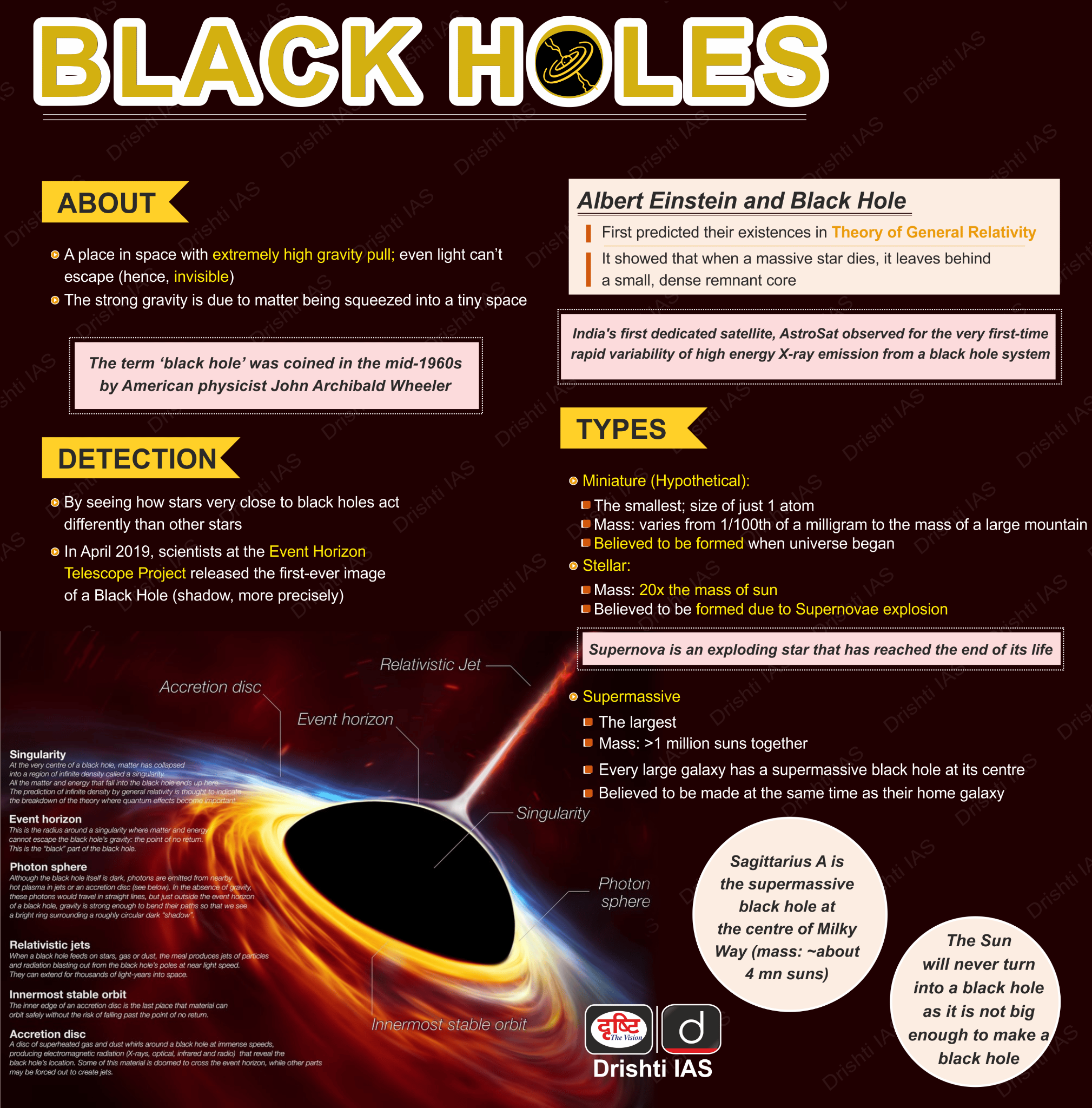Smaller Black Hole in OJ 287 Galaxy | 22 Jul 2024
Why in News?
Recently, a study carried out by a group of 32 scientists from 10 countries including India has confirmed the presence of a smaller black hole orbiting a larger black hole in the Galaxy OJ 287. This discovery was made using NASA's TESS satellite.
- It marked the first direct observation of an orbiting black hole pair, supporting previous theories proposed by astronomers.
Note:
- NASA's Transiting Exoplanet Survey Satellite (TESS), launched in April 2018, discovers exoplanets by monitoring the brightness of over 200,000 stars to detect periodic dips caused by planetary transits.
- Black holes are highly dense objects with such strong gravity that they prevent light from escaping, making them challenging to detect.
- They form when a massive star collapses at the end of its life, resulting in a dense entity that significantly warps the surrounding space-time.
- Exoplanets are planets that orbit other stars and are beyond our solar system.
What are the Implications of these Findings?
- Black Hole Growth and Mergers: This discovery suggests that black holes grow by accreting mass and merging, which is crucial for understanding supermassive black hole evolution.
- Accretion Disks and Jet Formation: The interaction of the smaller black hole with the larger one's accretion disk provides insights into jet formation, key to understanding active galactic nuclei (AGN) and galaxy evolution.
- Gravitational Waves and Cosmic Events: The emission of nano-Hertz gravitational waves offers new opportunities to study cosmic events and black hole pair dynamics, aiding in understanding black hole merger rates and galaxy evolution.
- Insights into Dark Matter and Energy: Studying black hole behaviour may provide indirect insights into dark matter and dark energy.

Read More: Exoplanet, Black Hole Gaia BH3
UPSC Civil Services Examination, Previous Year Question (PYQ)
Q. The term ‘Goldilocks Zone’ is often seen in the news in the context of (2015)
(a) the limits of habitable zone above the surface of the Earth
(b) regions inside the Earth where shale gas is available
(c) search for the Earth-like planets in outer space
(d) search for meteorites containing precious metals
Ans: (c)


